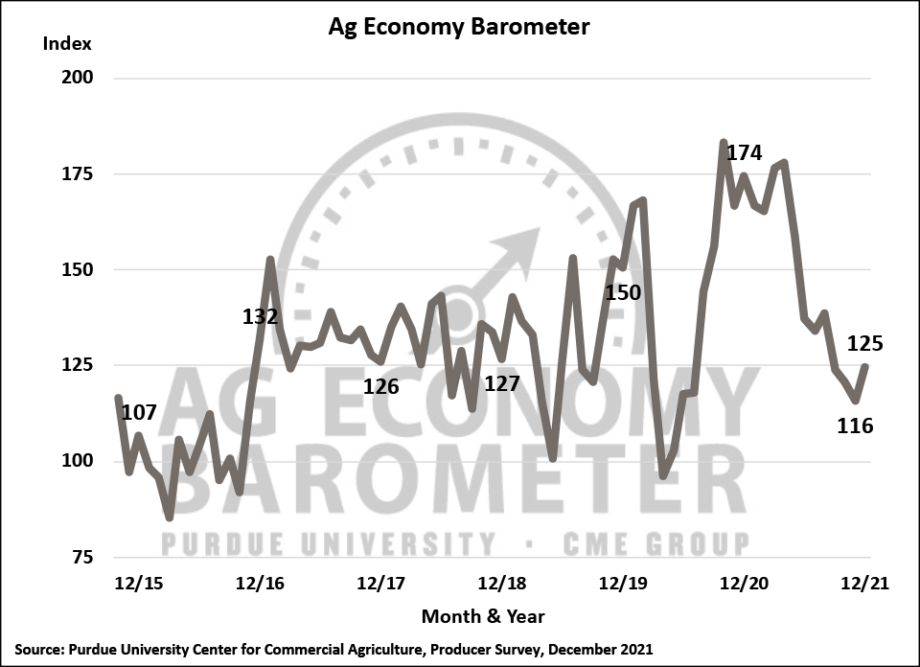WEST LAFAYETTE, INDIANA, US — For only the second time since May, the Ag Economy Barometer increased in December reflecting an improved perspective on current conditions in the agricultural sector.
The Purdue University/CME Group Ag Economy Barometer was up 9 points, to 125 in December. The Index of Current Conditions and the Index of Future Expectations also increased in the month.
The Ag Economy Barometer is calculated each month from 400 US agricultural producers’ responses to a telephone survey. This month’s survey was conducted between Dec. 8-14, 2021.
“Excellent crop yields this fall combined with strong crop prices provided many producers with their most positive cash flow in recent years,” said James Mintert, the barometer’s principal investigator and director of Purdue University’s Center for Commercial Agriculture. “That combination helps explain the year-end rise in the financial index as well as the barometer overall.”
Even as supply chain issues continue to hamper producers’ capital investment plans, the Farm Capital Investment Index rose in December, up 10 points to a reading of 49. This marks the most positive value for the investment index since August but remains 47% lower than in December 2020. The investment index’s improvement was primarily the result of fewer producers in December saying they planned to reduce their machinery purchases in the upcoming year, responding instead that they plan to hold their investments steady with the prior year. This month, 45% of survey participants said low farm machinery inventory levels impacted their farm machinery purchase plans.
Farmers expressed concern about rising production costs and the availability of production inputs. When asked what their biggest concerns are for their farming operation in the upcoming year, 47% of respondents selected higher input cost from a list that included lower crop and/or livestock prices, environmental policy, farm policy, climate policy and COVID’s impact. Over half (57%) of producers said they expect farm input prices in the upcoming year to rise by more than 20% compared to a year earlier and nearly four out of ten respondents said they expect input prices to rise by more than 30%.
This month’s survey also asked crop producers if they have had any difficulty purchasing crop inputs from their suppliers for the 2022 crop season. Nearly 4 out of 10 (39%) of respondents said they’ve experienced some difficulties. In a follow-up question, producers who indicated that they were experiencing difficulties in making purchases were asked which crop inputs they’ve had trouble purchasing. Responses were varied, which could be an indication of problems across the supply chain and included difficulties in purchasing fertilizer (31%), herbicides (28%), farm machinery parts (24%) and insecticides (17%).





